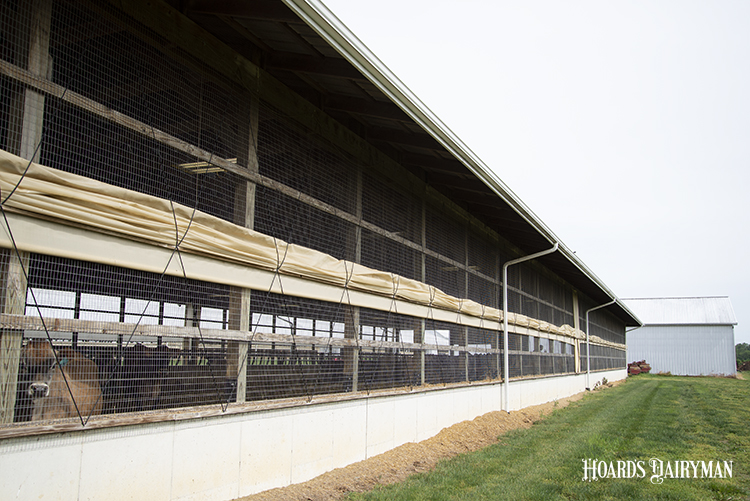
There are many options when it comes to dairy barn ventilation, and according to Nigel Cook, MRCVS, they can all operate very effectively. At the same time, he said any system can also be designed to fail miserably.
To design the right ventilation system for your barn, “Work with people who know what they are doing, and make good choices,” said Cook during the October Hoard’s Dairyman webinar.
“Design choice is a function of many factors,” he continued. The best fit for a particular situation can depend on climate, barn layout, economics, and performance. Social influences and a farmer’s tolerance for fan cleaning and maintenance also come into play.
While ventilation can involve fans, and many of them, a natural ventilation system depends mostly on wind to move air and cool cows. Cook said that natural ventilation can be a good option for many situations.
Natural ventilation works best, Cook explained, in variable climates that are not too hot or too cold. They don’t work well where it is really hot and humid.
It is better if these are single barn farms or where barn spacing can be optimized. Natural ventilation requires a minimum of 100 feet between buildings. Ideally, Cook said the barn would be placed in a spot with good wind access and be oriented east to west. It is best in narrow barns, with no more than six rows of stalls.
He noted that natural ventilation is economically beneficial choice in locations where the cost of electricity is high. The openness of this system also provides the option of cows to go in and out of the barn, if periods of outdoor access are desired or required by a farm’s milk market.
If ventilation and cow cooling must be achieved in another way, Cook shared several mechanical options as well:
• Positive pressure hybrid ventilation with fans pushing air into the barn
• Tunnel hybrid ventilation with cupola fans and curtains
• Tunnel ventilation with fans over the stalls
• Cross ventilation with fans over the stalls
• Cross ventilation with baffles over the stalls
Cook said a wide variety of ventilation options are available, but whichever one is used must be appropriate for the climatic conditions, economically viable to install and operate, and effective all year round.
“Consider all the options for ventilation for a specific project and choose the best solution for the farm,” he advised.
To learn more, watch the October Hoard’s Dairyman webinar, “An update on cooling and ventilation for dairy cattle.” This webinar was sponsored by Tunnel Plus.








